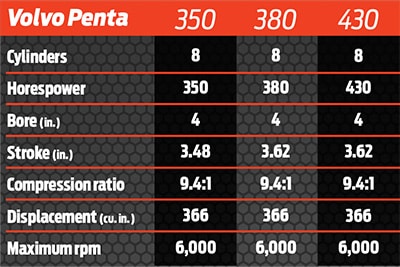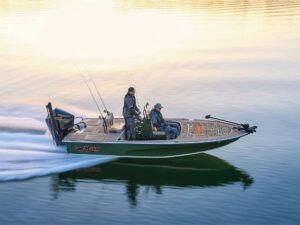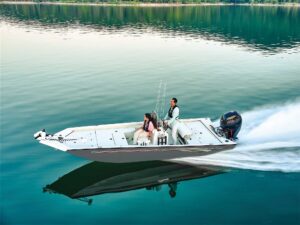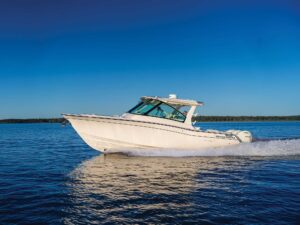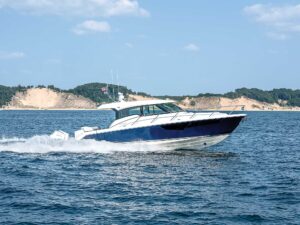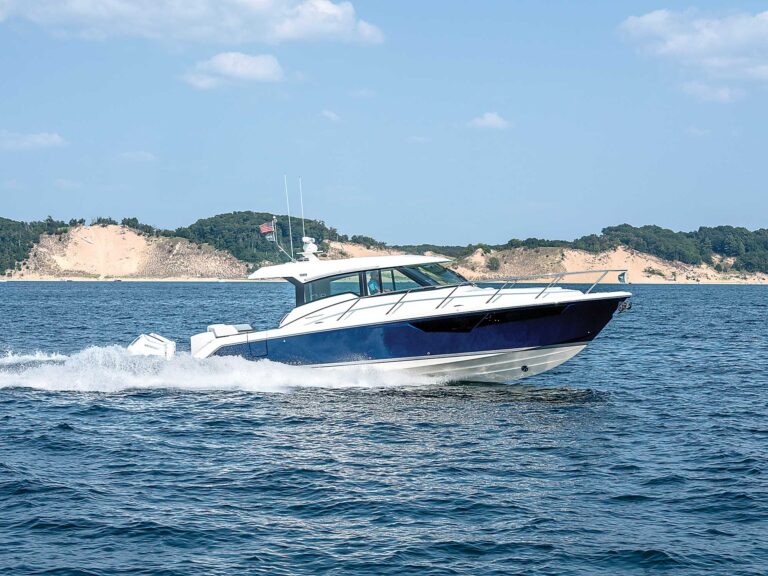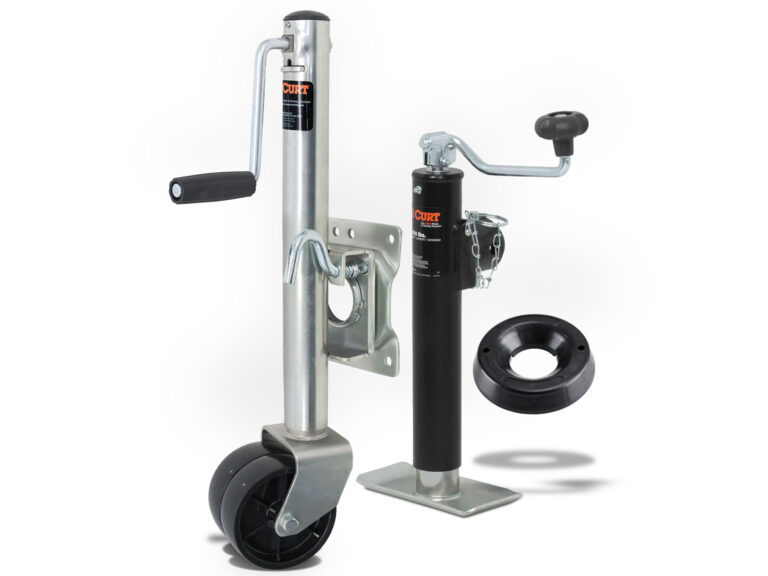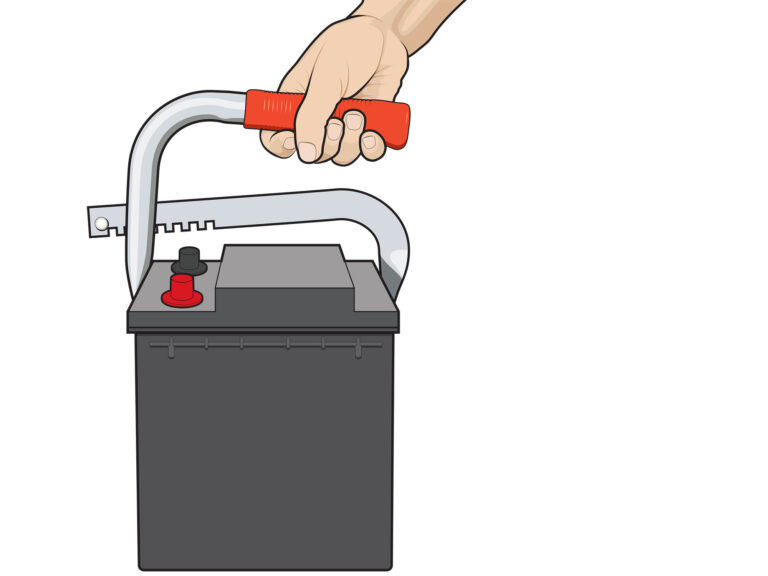Two years ago, Volvo Penta introduced a 380 hp gasoline sterndrive built on General Motors’ 6-liter block used in the Cadillac Escalade. In that SUV, the engine proved itself by generating admirably high mileage for a big-block engine and for giving smooth, consistent acceleration.
The 6-liter block doomed the 8.1-liter engine that both MerCruiser and Volvo Penta had utilized for big-block horsepower. When the big eight was canceled, MerCruiser turned to a crate 8.2 engine sold to racers and custom-car builders. Volvo Penta had ordered ahead and bought enough of the 8.1s to tide it over while developing the marinization plan for the 6-liter engine. It was the first to marinize the engine, and as proof of Volvo Penta’s foresight in taking that route, when it hit the market builders and boaters clamored for it. Boating‘s own testing proved this engine was lighter, more compact and more fuel-efficient than the 8.1. And plenty powerful.
“The 6-liter block delivers 90 percent of its torque between 2,000 and 4,500 rpm,” said Volvo Penta applications engineer Mark Huddleston. It hit all the new Environmental Protection Agency regulations and CE requirements, but when the Bodensee crowd caught wind of it, it wouldn’t quite make the grade for its stringent missions requirements. So Volvo Penta charged engineering to come up with a detuned 350 hp version.
“We didn’t plan for it to be a U.S. product,” Huddleston said, “but when boatbuilders started running it, they knew they had a niche for it.” It’s become a popular competitor to the 5.7-liter 350 hp sterndrive engines that both companies produced for a myriad of boat types.
Then, before the fanfare of this magic two-for-one engine block died away, Volvo Penta turned it into a 430 hp machine.
The block has variable valve timing, a mechanism that changes the cam action as more power is demanded of the engine. Its design allowed for the huge horsepower swing downward and made the engine more efficient still. To give it a long life, its aluminum-protected exhaust system features a closed cooling system shielding it from corrosive effects of raw water. All this and it’s catalyzed too.
Now, could Volvo Penta tune up this block to a higher horsepower? After all, it still needed a replacement for other power iterations of the 8-liter engine. More than just a bit of software wizardry was required.
“It needed hard part changes too. We had to change the cams and valves and grind the heads differently to make another 50 horsepower,” Huddleston said. Like its siblings, this 6-liter big block delivered nearly all its torque in that sweet spot between 2,000 and 4,500 rpm. “At 2,000 it gives 350 foot-pounds of torque and peaks at 420 horsepower at 4,500. And it burns 20 percent less fuel than the 8-liter,” Huddleston added.
On behalf of the many of you who have written into Boating and asked whether an engine maker offering multiple horepower ratings from the same block could arrange things so that the maximum power output could be altered in the field or by the dealer, Volvo Penta went on record with a definitive answer.
“There’s this little agency called the EPA,” Huddleston said. “We are required to label each engine as to its horsepower and specs, and if it is done inaccurately, we could be fined thousands of dollars per engine.”
Another perennial question from readers queries aftermarket maps for marine motors: Couldn’t somebody hack the electronic control module and copy a 380 map to a 350 and score a little extra horsepower? It’s done every day in the car and truck market.
“It could be done, I’d say, but the market volume isn’t there to attract the development of aftermarket programs,” Huddleston said.
And then there’s that warranty question if you mess with Mother Nature.
